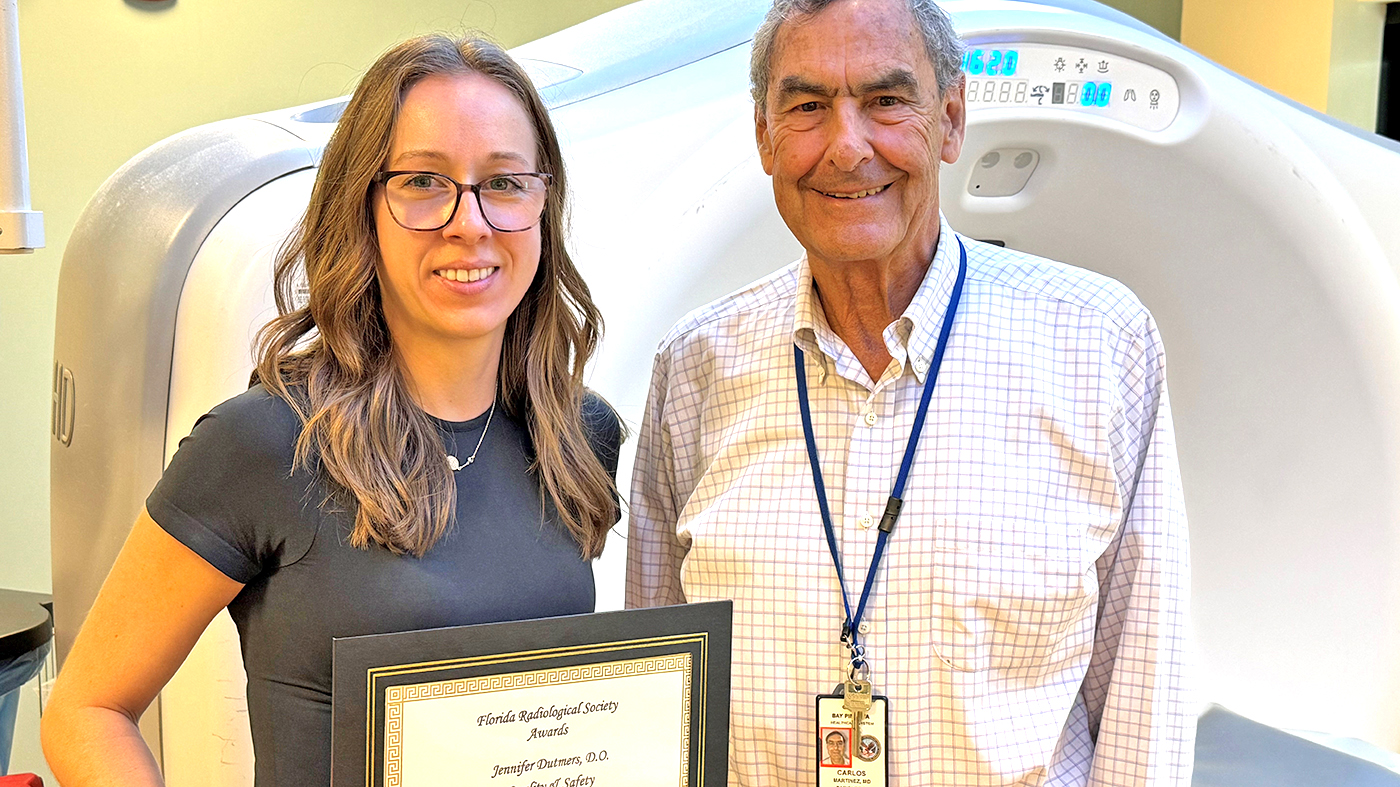Radiation is the transfer of energy through space and, for more than a century, medical professionals have utilized this phenomenon to treat patients. While it has its benefits, radiation exposure may also induce concern in those who receive it. To combat this unease, radiologists at Bay Pines VA set out to reduce the amount of radiation Veterans are exposed to, one scan at a time.
Reducing radiation during CT scans is important because, even though the doses used are low, any amount of ionizing radiation that the body receives may increase the risk of developing cancer, especially with repeated scans.
Because of this, Dr. Jennifer Dutmers and her colleagues at Bay Pines VA felt it was crucial to take on a project that uncovered how to minimize radiation exposure whenever possible.
“The project began with data collection in the summer of 2023,” said Dr. Carlos Martinez. “By the end of the year, new protocols were being implemented and re-evaluated periodically to ensure the new methods for reduced radiation exposure were being followed.”
Through referencing the available data, following new protocols and taking a closer look at scan doses and time limits, Dutmers and Martinez were able to accomplish their goal of delivering the lowest possible dose of radiation during the CT of paranasal sinuses, while still providing a high-quality image.
“Our data proves that we can reduce radiation to patients undergoing paranasal sinus CT by using these methods,” said Dutmers. “This strategy has already been implemented at three sites across VISN 8 helping more Veterans than just at our home institution.”
Martinez added that this reduced radiation project does not just focus on CT but it is part of an ongoing effort of the radiologists and technologists at Bay Pines VA to help physicians at VA healthcare systems across the nation reduce the amount of radiation Veterans are exposed to during other imaging procedures such as radiography and fluoroscopy.
Received Quality and Safety Award
During the 2024 Florida Radiological Society annual meeting, Martinez and Dutmers (pictured above) were awarded the Quality and Safety award for their work on reducing the amount of radiation that Veterans are exposed to during Computed Tomography of paranasal sinuses.
Receiving the Quality and Safety award marks the beginning of a pattern of improvements in care they hope to implement in the future.
“It feels great to be recognized for our work. This ongoing project has been part of a greater effort for quality improvement and radiation dose reduction,” said Dutmers. “We hope to continue our efforts in dose reduction with other measures and examinations throughout radiology that will benefit as many Veterans as possible.”
Topics in this story
More Stories
For a group of Veterans at the Central Virginia VA Health Care System, Parkinson’s care includes a regular check-in to see what they’ve built with Legos.
Daughter and son-in-law find a diary of her father's life as a prisoner of war written on toilet paper.
VA announces positive Veteran satisfaction feedback on telehealth services, including video visits, in the first half of fiscal 2025.






As a Marine Corps veteran, its good to see some positivity. The recent initiative by Bay Pines VA radiologists to reduce radiation exposure for Veterans is commendable. By focusing on minimizing radiation doses in imaging procedures, they are setting a new standard for patient safety and care. This proactive approach not only enhances the well-being of Veterans but also exemplifies a commitment to continuous improvement in medical practices. Such efforts are essential in advancing healthcare quality and ensuring the trust and confidence of those served.
As a cancer vulnerable patient who gets regular CT scans. I’m grateful to learn research is being done to reduce radiation exposure. Thank you for giving recognition to this important breakthrough.
Why doesn’t the VA keep track of accumulated radiation through Radiology Records? If each report/test contains the amount of exposure, why not create a database that continues to add the radiation exposure. Keep a running tally, visible to both patient & physicians.
I did radiology (X-rays) exams at the 8th Medical Field Hospital in NaTrang, Viet Nam (1965) in a “TENT” using a portable generator. The machine was made by a company called “PICKER” and was painted green. All safety rules & laws were thrown out (NO 5 minute timers). During fluoroscopy the Radiologist had to look directly into the beam from under the table (NO leaded glasses, NO lead gloves, etc. available). Today, the Radiologist have decided to spread the radiation around and are having the Technologist do the Barium exams from start to finish while they sit in thier office. AI may help reduce this dosage in the future.